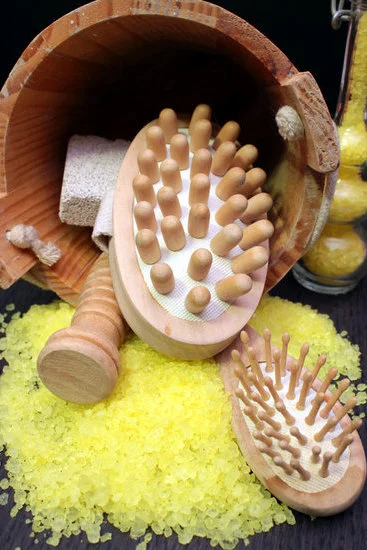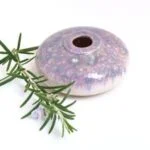Are you wondering, “Does oil get on furniture using aromatherapy diffusers?” Aromatherapy diffusers have become increasingly popular for their ability to disperse essential oils into the air, providing various health benefits. However, many people are concerned about the potential for oil to damage or stain furniture when using these devices.
Aromatherapy diffusers are small devices that release essential oils into the air in a fine mist or vapor. These oils are often used for their therapeutic effects, such as promoting relaxation, improving sleep, and boosting mood. While the benefits of aromatherapy are well-known, there is also a concern about whether the oil released from diffusers can cause damage to surrounding furniture.
In this article, we will delve into the world of aromatherapy diffusers and explore how they work, the potential risks they pose to furniture, and practical tips for preventing oil from getting on and damaging your furniture. We will also discuss proper cleaning and maintenance techniques if oil does come into contact with your furniture.
Additionally, alternative solutions for enjoying aromatherapy without risking damage to your furniture will be explored. If you’re curious about the potential impact of aromatherapy diffusers on your furniture, read on to find out more.
Understanding How Aromatherapy Diffusers Work
How Aromatherapy Diffusers Work
Aromatherapy diffusers work by dispersing essential oils into the air, allowing their molecules to be inhaled and absorbed by the body. There are several different types of diffusers, each working in a slightly different way to release the essential oils. The most common types include ultrasonic diffusers, nebulizing diffusers, heat diffusers, and evaporative diffusers. These devices are designed to create a fine mist or vapor that carries the scent of the essential oils throughout the room.
Potential Effects on Furniture
One potential concern when using aromatherapy diffusers is the possibility of essential oils coming into contact with furniture. In some cases, these oils can be volatile and may leave residue on surfaces such as wood, plastic, or fabric. Over time, this can result in staining or damage to furniture if not properly addressed.
Understanding the Risks
The level of risk for oil getting on furniture using aromatherapy diffusers depends on several factors such as the type of essential oil being used, how often the diffuser is used, and the proximity of furniture to the diffuser. Oils with a higher viscosity are more likely to leave residue on surfaces compared to lighter oils.
Additionally, if a diffuser is placed near furniture or operated for an extended period without proper ventilation, there is an increased likelihood of oil affecting nearby surfaces. Understanding these risks can help users take proactive measures to protect their furniture from potential damage.
Types of Aromatherapy Diffusers
When considering using aromatherapy diffusers, it’s essential to understand that there are various types of diffusers available in the market. Each type has its own unique way of dispersing essential oils into the air and may have different effects on furniture. Below are some common types of aromatherapy diffusers:
1. Nebulizing Diffusers: These diffusers use pressurized air to break down essential oils into a fine mist that is released into the air. Because nebulizing diffusers do not require heat or water, there is minimal risk of oil getting on furniture.
2. Ultrasonic Diffusers: Ultrasonic diffusers use water and ultrasonic vibrations to disperse essential oils into the air as a fine mist. While they are generally safe for furniture, there is a slight possibility of water vapor carrying oil particles and landing on nearby surfaces.
3. Evaporative Diffusers: This type of diffuser uses a fan to blow air through a pad or filter containing essential oils, causing them to evaporate and be released into the air. There is a chance that oil particles may settle on furniture near the diffuser.
4. Heat Diffusers: Heat diffusers use heat to evaporate essential oils, releasing their aroma into the air. While these diffusers may pose a higher risk of oil getting on furniture due to evaporation, they are often used with caution and placed in areas away from furnishings.
It’s important to choose the right type of aromatherapy diffuser based on your preferences and needs while also considering the potential impact on your furniture. By understanding how each type works and its potential effect on furniture, you can make an informed decision when selecting a diffuser for your home.
Additionally, proper placement of the diffuser and regular cleaning can help minimize any potential impact on furniture from using aromatherapy diffusers. It’s also crucial to consider using essential oils responsibly and ensuring that any spills or drips are promptly cleaned up to prevent damage or staining. With the right precautions and maintenance, you can enjoy the benefits of aromatherapy without worrying about oil getting on your furniture.
Potential Risks for Furniture
When using aromatherapy diffusers, there is a potential risk of essential oils getting on furniture in your home. While these diffusers offer numerous benefits for improving mood, reducing stress, and creating a relaxing atmosphere, it’s important to be aware of the potential impact they can have on your furniture.
Potential Stains and Damage
One of the main risks of using aromatherapy diffusers is the possibility of essential oils causing stains or damage to your furniture. If the diffuser is placed too close to furniture, droplets of oil may land on surfaces and potentially leave behind residue that can be difficult to remove. Over time, this can lead to discoloration or damage to wood, fabric, and other materials.
Affecting Surface Finish
In addition to potential staining, the use of essential oils in aromatherapy diffusers can also affect the surface finish of furniture. The natural properties of certain oils may interact with the varnish or protective coating on furniture, causing it to break down or become discolored. This can result in an uneven appearance or a deterioration in the overall quality of your furniture.
Concerns for Sensitive Materials
Certain types of furniture with sensitive materials such as leather or antique finishes are particularly vulnerable to damage from essential oils. The chemical composition of some oils may react negatively with these materials, leading to irreparable harm. It’s crucial for individuals with these types of furnishings to take special care when using aromatherapy diffusers in their living spaces.
Understanding these potential risks illustrates the importance of taking precautions when using aromatherapy diffusers around your furniture. By being mindful of where you place the diffuser and how you maintain it, you can minimize the chances of oil getting on your valued furnishings.
Tips for Preventing Oil From Getting on Furniture
Aromatherapy diffusers are a popular way to enjoy the benefits of essential oils, but many people wonder if oil can get on furniture when using these devices. Understanding how to prevent this from happening is important for maintaining the integrity of your furniture and preventing any potential damage or staining. Here are some practical tips and advice for preventing oil from damaging or staining furniture when using aromatherapy diffusers:
1. Choose the right location: When setting up your aromatherapy diffuser, make sure to place it on a stable surface that is not directly above or next to any furniture. This will help minimize the risk of oil accidentally spilling onto your belongings.
2. Use a coaster or protective mat: Placing a coaster or protective mat underneath the diffuser can serve as an extra layer of protection for your furniture. If any oil does happen to escape from the diffuser, it will be caught by the coaster or mat instead of coming into contact with your furniture.
3. Regular maintenance: Clean and maintain your diffuser regularly to prevent any potential leaks or spills. Proper maintenance will help ensure that your diffuser operates efficiently and minimizes the risk of oil getting on your furniture.
By following these simple tips, you can enjoy the benefits of aromatherapy without having to worry about oil damaging or staining your furniture. Taking proactive measures to prevent any potential spills or leaks from occurring will help keep your home environment clean and free from any unwanted oil residue.
Remember, prevention is key when it comes to protecting your furniture from potential oil damage caused by using aromatherapy diffusers. Consider these practical tips and advice to maintain both the efficacy of your diffuser and the quality of your furniture.
Cleaning and Maintenance
Aromatherapy diffusers are popular for their ability to disperse essential oils into the air, providing various health and wellness benefits. However, one common concern among users is whether oil can get on furniture when using these devices. The answer to this question depends on the type of diffuser being used and how it is being operated.
When essential oils are dispersed into the air using an aromatherapy diffuser, there is a possibility that some of the oil may settle on nearby surfaces, including furniture. This can potentially lead to damage or staining if not addressed properly. It’s important for users to be mindful of this possibility and take proactive measures to prevent any potential harm to their furniture.
To prevent oil from getting on furniture while using aromatherapy diffusers, there are several practical tips that can be implemented. Placing a protective barrier such as a cloth or tray under the diffuser can help catch any oil that may be dispersed and prevent it from coming into direct contact with furniture. Additionally, regularly cleaning and maintaining the area around the diffuser can also help minimize the risk of oil affecting furniture surfaces.
Proper cleaning and maintenance of furniture if oil does get on it from diffusers is crucial in order to prevent long-term damage. Using gentle cleaning solutions and techniques specific to the type of furniture material can help remove any oil residue without causing further harm. Additionally, regular maintenance such as dusting and polishing can help keep furniture looking its best, even when using aromatherapy diffusers in the vicinity.
| Tips for Preventing Oil From Getting on Furniture | Proper Cleaning and Maintenance Techniques |
|---|---|
| Place a protective barrier under the diffuser | Use gentle cleaning solutions specific to furniture material |
| Regularly clean and maintain the area around the diffuser | Implement regular dusting and polishing routines |
Alternative Solutions
Aromatherapy diffusers are a popular way to enjoy the benefits of essential oils, but many people may be concerned about the potential for oil getting on furniture. Fortunately, there are alternative methods for enjoying aromatherapy without the risk of oil damaging or staining furniture. One such alternative is using essential oil inhalers or personal diffusers. These compact devices allow individuals to enjoy the benefits of aromatherapy without the need for a larger diffuser that could potentially release oil onto furniture.
Another alternative method for enjoying aromatherapy without the risk of oil getting on furniture is using essential oils in a bath or shower. Adding a few drops of essential oil to a warm bath or shower can create a relaxing and therapeutic experience without the need for a diffuser at all.
Additionally, individuals can also create their own natural room sprays by combining water with their favorite essential oils in a spray bottle. This allows them to enjoy the aromatic benefits of essential oils throughout their home without the concern of oil coming into contact with furniture.
For those who still prefer to use a traditional aromatherapy diffuser, there are options available that are designed specifically to prevent oil from escaping and coming into contact with furniture. Some modern diffusers feature ultrasonic technology that breaks down essential oils into a fine mist, preventing any large droplets from settling on nearby surfaces.
By exploring these alternative methods for enjoying aromatherapy, individuals can continue to benefit from the aromatic properties of essential oils while minimizing the risk of oil getting on their furniture.
Overall, there are several alternative methods for enjoying aromatherapy without risking damage to furniture from essential oils. Whether it’s through personal inhalers, using oils in baths or showers, creating natural room sprays, or investing in diffusers designed to prevent oil escape, individuals can continue to enjoy the therapeutic benefits of essential oils while protecting their furniture from potential damage.
Conclusion
In conclusion, the use of aromatherapy diffusers can offer numerous benefits in terms of promoting relaxation, improving mood, and even providing some health benefits. However, it is important to be aware of the potential risks associated with using diffusers and how they may affect furniture due to the essential oils they release. While there is a possibility that oil can get on furniture when using aromatherapy diffusers, there are practical tips and solutions that can help prevent damage and staining.
It is crucial to consider the type of diffuser being used as different types may release differing amounts of oil into the air. Being mindful of where the diffuser is placed in relation to furniture is also important in preventing any potential damage. Additionally, regular cleaning and maintenance of both the diffuser and furniture can help mitigate any risk of oil getting on furniture.
If individuals are concerned about oil getting on their furniture from using aromatherapy diffusers, exploring alternative methods for enjoying the benefits of essential oils can be a viable option. There are other ways to incorporate aromatherapy into daily routines without the risk of damaging furniture. Ultimately, by being informed about the potential risks and taking preventive measures, individuals can continue to enjoy the benefits of aromatherapy without worrying about damaging their furniture.
Frequently Asked Questions
Do Oil Diffusers Leave Residue on Furniture?
Oil diffusers can leave a residue on furniture if not used properly. Over time, the mist released by the diffuser may settle on nearby surfaces, leaving behind a thin film of oil.
How Do You Remove Diffuser Oil From Wood Furniture?
To remove diffuser oil from wood furniture, you can start by gently wiping the affected area with a soft, dry cloth to absorb as much of the oil as possible. Then, use a mild wood cleaner to effectively remove any remaining residue without damaging the wood.
Where Should You Not Put an Oil Diffuser?
It is not recommended to put an oil diffuser directly onto wooden surfaces or delicate fabrics. Placing the diffuser on these types of materials may result in staining or damage due to potential oil leaks or spills. Instead, consider using a protective tray or mat underneath the diffuser to prevent any mishaps.

Are you looking for a natural way to improve your health and wellbeing?
If so, aromatherapy may be the answer for you.





